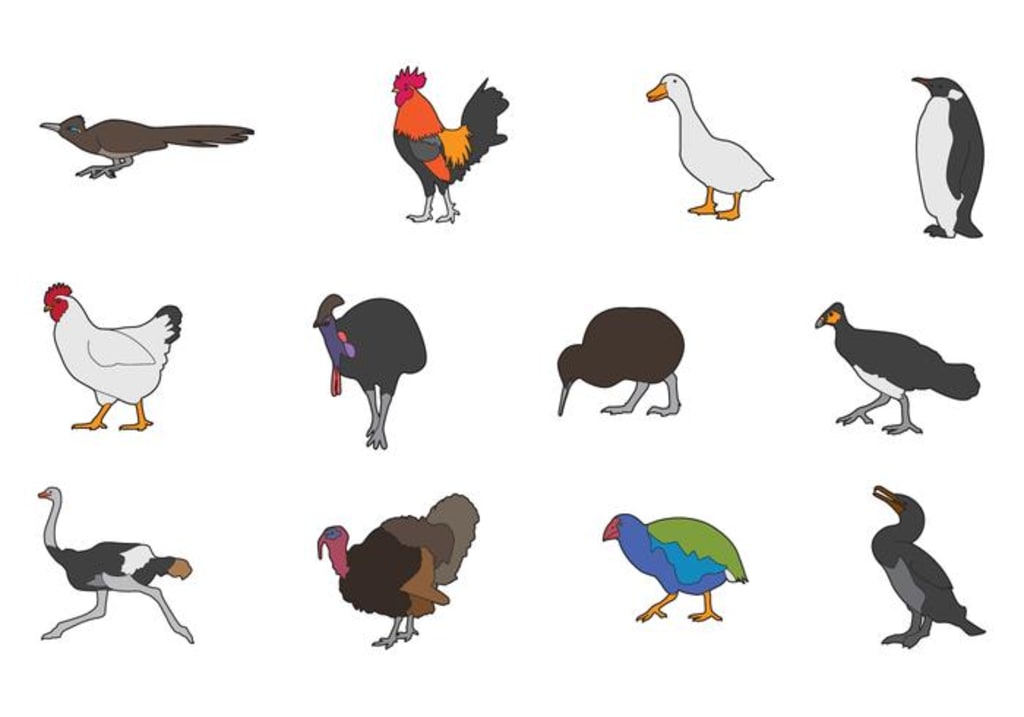Flightless Birds: Exploring the Fascinating Adaptations, Evolution, and Conservation of These Ground-Dwelling Avians
Examining the Adaptations, Distribution, Behavior, and Threats Faced by Flightless Birds, and the Importance of their Conservation in the Modern World

Flightless birds are a diverse group of avian species that have adapted to living on the ground, in forests, or in the water. These birds have evolved over millions of years to suit their specific environments and niches, resulting in fascinating adaptations such as powerful legs and wings that have been modified for different purposes. In this article, we will explore the biology, behavior, evolution, and conservation of some of the most well-known and intriguing flightless birds.
Overview:
Flightless birds are birds that have lost the ability to fly due to evolutionary adaptations. These birds have evolved in different environments, including islands, deserts, forests, and wetlands. Flightlessness has evolved independently in several bird families, including ratites, penguins, and rails.
Ratites:
Ratites are a group of flightless birds that are characterized by a flat sternum, which lacks the keel that anchors the powerful flight muscles of flying birds. Ratites are distributed around the world, with representatives in Africa, Australia, and South America. The most well-known ratites are the ostrich, emu, and cassowary.
Ostrich:
The ostrich is the largest living bird in the world, standing over 8 feet tall and weighing up to 350 pounds. Ostriches are native to Africa and are well adapted to living in arid environments. Their powerful legs are used for running, and they can reach speeds of up to 45 miles per hour. Ostriches also have large wings that are used for balance and display.
Emu:
The emu is the second largest living bird in the world and is native to Australia. Emus have long, powerful legs that are used for running and kicking, and they can reach speeds of up to 30 miles per hour. Emus also have a long, flexible neck that allows them to reach the ground for food.
Cassowary:
The cassowary is a large flightless bird native to the tropical forests of Australia and New Guinea. Cassowaries have powerful legs and are known for their ability to deliver dangerous kicks with their sharp talons. They also have a brightly colored head and neck, which is used for communication and courtship.
Penguins:
Penguins are flightless birds that are adapted to living in the cold, nutrient-rich waters of the Southern Hemisphere. Penguins have streamlined bodies, which are perfect for swimming, and they have flipper-like wings that are used for steering and diving. Penguins are also well adapted to the cold, with thick layers of feathers and a layer of fat that helps to insulate their bodies.
Rails:
Rails are a group of flightless birds that are found in wetland habitats around the world. Rails are characterized by a compact body shape and powerful legs that are used for walking and swimming. The most well-known flightless rail is the moorhen.
Moorhen:
The moorhen is a flightless rail that is found in wetland habitats in Europe and Asia. Moorhens have powerful legs and toes that are adapted for walking on floating vegetation and for swimming.
Evolution:
Flightlessness has evolved independently in several bird families, including ratites, penguins, and rails. The evolution of flightlessness is thought to have occurred as a result of several factors, including the availability of food, the absence of predators, and changes in the environment. Flightlessness has allowed these birds to adapt to their specific environments and niches.
Conservation:
Many flightless birds are endangered or threatened due to habitat loss, hunting, and other human activities. Conservation efforts are underway to protect these birds and their habitats. For example, the New Zealand government has implemented measures to protect the endangered kiwi, which is a flightless bird that is endemic to New Zealand. Similarly,
About the Creator
Enjoyed the story? Support the Creator.
Subscribe for free to receive all their stories in your feed. You could also pledge your support or give them a one-off tip, letting them know you appreciate their work.





Comments
There are no comments for this story
Be the first to respond and start the conversation.